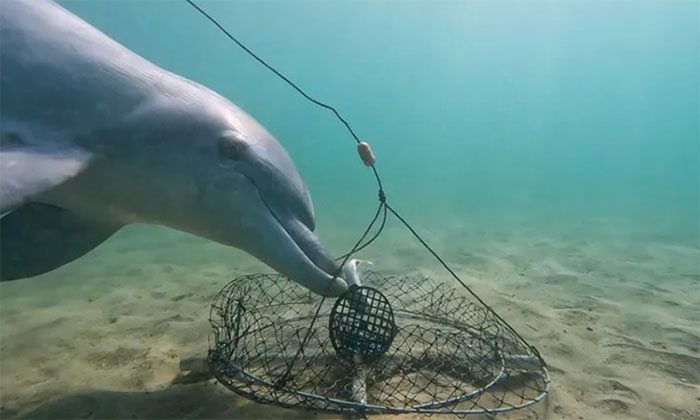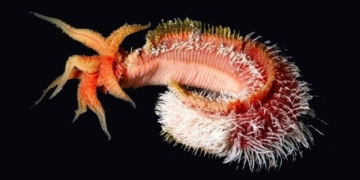Dolphins in Koombana Bay, Western Australia, have learned how to steal bait from crab traps and remove hooks with their snouts.
Camera captures the bait-stealing behavior of dolphins. (Video: Dolphin Discovery Center)
Dolphins have figured out how to outsmart crab fishermen by stealing bait from their crab traps, with new footage documenting this clever behavior for the first time. Bottlenose dolphins observe fishermen placing bait in nets and lowering them into the waters off Koombana Bay, Western Australia. They then poke their snouts into the traps, pulling bait off the hooks inside. Fishermen try to place bait beneath the traps or in boxes to deter the thieves, but the dolphins quickly learn how to flip the traps or open the boxes, as reported by Live Science on November 17.
Wildlife conservationist Rodney Peterson first noticed this behavior two years ago and was concerned that the dolphins could get entangled in the nets or consume harmful food. He contacted the Dolphin Discovery Center in Bunbury to install five cameras to document their behavior.
“Dolphins are very intelligent observational species and are constantly foraging. Typically, when they see an opportunity, they seize it, especially mother dolphins with calves,” said filmmaker Axel Grossmann, a volunteer at the Dolphin Discovery Center. The dolphins open traps in various ways. The simplest method involves the dolphins grabbing bait placed on the hooks or metal clasps inside the crab traps. Essentially, the dolphins are pulling the fish off the clasps or breaking them into smaller, more manageable pieces, Grossmann explained.

Dolphins quickly learn to use their jaws and bodies to flip crab traps for easier access to bait.
To thwart these mammals, some fishermen place bait beneath the crab traps, forcing dolphins to use more complex techniques to steal it. However, they quickly figured out how to use their jaws and bodies to flip the traps, making it easier to access the bait. The dolphins even open plastic boxes used to hold the bait with their snouts and teeth.
Due to concerns from conservation experts about the dolphins becoming entangled or injured, they developed a safer new solution: using mesh bags with metal hooks to protect the bait inside. The dolphins recognized they could not access the bait and swam away.
Dolphins steal fish used as crab bait for various reasons. If they are hungry, they may exert more effort to obtain additional food sources like crab traps, especially in areas frequented by people. However, not all dolphins engage in this behavior. Researchers believe this behavior may stem from curiosity about how to easily obtain fish, adaptive behavior learned through experience, or even just for fun, Grossmann noted.




















































